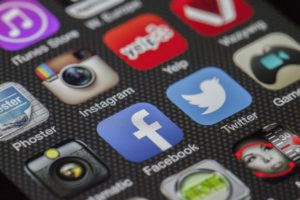 Facebook and Twitter are emerging as the winning platforms for PR pros. While other platforms, like YouTube and Snapchat, are equally important, it is within these two platforms where most interactions and two-way engagements take place—at least at the moment.
Facebook and Twitter are emerging as the winning platforms for PR pros. While other platforms, like YouTube and Snapchat, are equally important, it is within these two platforms where most interactions and two-way engagements take place—at least at the moment.
Yes, we have WeChat and Weibo in Asia, but that is another story.
Back to Facebook and Twitter. While both platforms are favorites for many bands, PR pros and journalists, they differ in stark ways. Taking these into considerations when architecting your PR strategy is well advised. Here are three differences that really matter:
- Friends vs. Strangers
Facebook is designed to be a living journal of your brand. It’s geared for two-way engagement and coaxing prospects through the marketing funnel. It’s great for highlighting key brand values, reinforcing brand reputation and sharing viewpoints. Followers expect that. Posting videos and images is more natural, offering various ways to engage your company “friends”. But it is geared toward friends and not strangers, which means you need to spend additional time to win them over first (usually via the Facebook company page).
Twitter is about news headlines. With the right hashtag, you can follow trending stories and filter into other peoples thoughts—a key reason why journalists use it for story ideas. It is great for posting live events, quick thoughts, replying to comments and highlighting articles or infographics. But attention spans are a lot shorter on Twitter, and being overly creative or verbose can discourage followers. Unlike Facebook, Twitter is a great medium to talk to strangers, which makes pitching a story over Twitter to a journalist easier. [bctt tweet=”Twitter is a great medium to talk to strangers #PR” username=”@BroadPR”]
- Character Limit
Twitter’s biggest difference is limited character lengths. 140 characters is all you get. For many Twitter users, this is a good thing. Brands need to be creative and snappy at the same time. If not, the next feed will gain the attention. When replying to journalists’ requests, PR professionals need to get to the point quickly (and journalists will love that you do that). Also, for Twitter posts, you must persuade people to click on your link (if you have one), which means that you have 140 characters to convince followers to engage in an action. It’s definitely a great training ground for how to say a lot with a few words.
On Facebook, which does not limit characters, stories can be longer. However, large groups of text can be onerous to read online or when using a mobile phone. This means you need to structure your text carefully. Thankfully, PR pros can use multimedia to spruce up the content and make it more interesting, especially when users tend to be scrolling up and down to catch up with their friends’ posts.
- Timing Matters
Most importantly, the time you post on Twitter or Facebook differs. Facebook users tend to follow their friends, and often it’s during breaks or before bed. It’s a work habit thing, akin to having a call. Meanwhile, Twitter followers are always on the edge, eager to catch up with any ground-breaking news. This is why it is often used for company announcements, double screening (giving updates to users while they are watching a TV program) and during an event (like an election). Nevertheless, timing is unique to each location and user base that you are targeting, and you can bet that it will be completely different for both mediums.
####